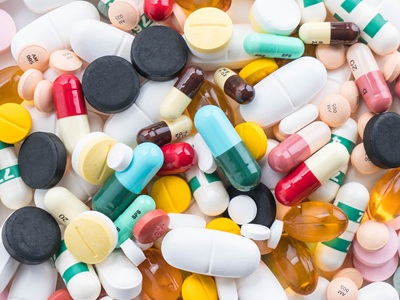Drug Reactions and the Skin
Drug Reactions and the Skin: A Guide for Dermatologists
Drug reactions are a common reason for patients to visit dermatology clinics. Some medications can cause allergic or toxic reactions that manifest on the skin, ranging from mild rashes to severe, life-threatening conditions. Recognizing and managing these reactions are critical for dermatologists to ensure patient safety and well-being.
Types of Drug Reactions
-
Maculopapular Rash
- When Does It Appear?: A few days to weeks after starting the medication.
- Symptoms: Red or pink flat and raised spots that may spread across the body, often itchy.
- Common Causes: Antibiotics (e.g., amoxicillin), NSAIDs.
-
Urticaria and Angioedema
- When Does It Appear?: Immediately or within hours of taking the drug.
- Symptoms: Itchy, raised welts (hives) and swelling, especially around the lips, eyes, or tongue.
- Common Causes: Penicillin, aspirin, ACE inhibitors.
-
Stevens-Johnson Syndrome (SJS) and Toxic Epidermal Necrolysis (TEN)
- When Does It Appear?: 1–3 weeks after starting the medication.
- Symptoms: Widespread skin peeling, mucosal involvement, fever, and fatigue.
- Common Causes: Anticonvulsants, sulfonamides.
-
Photosensitivity Reactions
- When Does It Appear?: After sun exposure.
- Symptoms: Redness, burning, or blistering in sun-exposed areas.
- Common Causes: Tetracyclines, quinolones, thiazide diuretics.
-
Fixed Drug Eruption
- When Does It Appear?: Recurrent lesions appearing hours after re-exposure to the drug.
- Symptoms: Dark red or purplish spots in the same area with each exposure.
- Common Causes: NSAIDs, sulfa drugs.
-
Drug-Induced Vasculitis
- When Does It Appear?: A few days to weeks after starting the drug.
- Symptoms: Small purple spots, often on the legs.
- Common Causes: Antibiotics, NSAIDs.
Diagnosing Drug Reactions
-
Detailed Patient History
- Record all medications, including over-the-counter drugs and supplements.
- Ask about prior drug reactions or allergies.
-
Clinical Examination
- Assess the type, distribution, and pattern of skin lesions.
-
Laboratory Tests
- Blood Tests: Check for eosinophilia or changes in liver function.
- Biopsy: Useful in severe or unclear cases to confirm the diagnosis.
Managing Drug Reactions
-
Discontinue the Suspected Drug
- Stop the medication immediately to prevent further progression.
-
Supportive Care
- For Itching: Antihistamines and soothing moisturizers.
- For Inflammation: Topical or systemic corticosteroids as needed.
-
Treating Severe Reactions
- Hospitalization: Required for conditions like SJS or TEN.
- Immunomodulators: Therapies like plasmapheresis or intravenous immunoglobulin (IVIG) may be used.
-
Photosensitivity Management
- Use broad-spectrum sunscreens and minimize sun exposure.
Important Considerations for Dermatologists
- Medication Review: Always review the patient's medication list for potential culprits.
- Patient Education: Inform patients about avoiding future exposure to the triggering drug.
- Systemic Assessment: Evaluate for involvement of other organs in severe reactions.
Preventing Drug Reactions
- Thorough Patient History: Note any previous drug allergies or sensitivities.
- Monitor Drug Interactions: Be aware of possible interactions in patients taking multiple medications.
- Emergency Preparedness: Have protocols in place for managing anaphylaxis or other severe reactions.
Conclusion
Drug reactions involving the skin require careful evaluation and management by dermatologists. Early recognition and appropriate treatment can prevent serious complications and improve patient outcomes.
For professional care and guidance on managing drug reactions, contact our clinic today!





